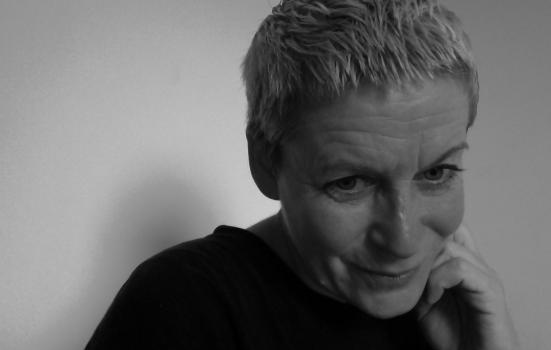Jane Greenfield, Director of Home Live Art, shares the details of her career in dance, landscape and heritage, and the benefits of daring to be different.

Director of Home Live Art (2013 – present)
Having worked as a freelance producer for Home Live Art since 2005, I became Director in 2013 – a position I share with Mimi Banks. To its strength, Home is a very small, flexible organisation. We don’t have a building or office, instead staff work from their home bases coming together and hot-desking in various London spaces. From our early roots presenting radical work in a family home in south London, to championing the presentation of live art in mainstream and community contexts, we have worked with major partners including the National Theatre, Barbican and Tate Britain. We have just had our National Portfolio funding confirmed for a further three years, which certainly secures our future for the medium term. However, like many organisations in this difficult climate, we will need to be extremely creative with our resources, build mutually beneficial partnerships and continue to demonstrate a ‘can do’ attitude!
Freelance Creative Producer (2004 – 2013)
As an independent producer and curator I was fortunate to be able to follow my interests and work across artforms. Through a number of commissioned projects and with the support of a C4C Fellowship from York St John University, I brought the landscape, outdoor and heritage sectors together. From 2009 to 2012, with my colleague Kate Stoddart, I was appointed joint Contemporary Arts Officer for the National Trust in the East Midlands. As with many of the positions I’ve held, this was a brand new post – an untried and un-tested job, which came with many challenges and rewards! Not least was convincing the traditional membership that art had a place within heritage. Our role was to embed contemporary arts practice and understanding throughout the many layers of the Trust, from property level through to engagement, volunteering, learning and management. At a time when arts budgets were beginning to decrease and with cuts on the horizon, we were incredibly lucky and privileged to have well-resourced programming budgets, enabling us to commission major new works by artists such as London Fieldworks and architectural practice Studio Weave.
Director of Dance4 National Dance Agency (1994 – 2004)
At the age of 29 I became the Artistic Director of Dance4 in Nottingham, one of England’s network of nine national dance agencies at that time. For ten years I supported and gave a voice to dance work that existed in the margins or was deemed too difficult to present. During this period I created the international Nottdance Festival – probably my signature achievement. Questioning and exploring, delighting and offending audiences in equal measure, Nottdance broke all the boundaries of conventional dance. It also helped establish the work of international artists and companies such as Jérôme Bel, La Ribot and Xavier Le Roy in the UK. Eventually my interests in other art forms, including land art and the visual arts, lead me to train in horticulture and landscape design and pursue a freelance career.
Art Officer Nottingham Playhouse and Nottinghamshire County Council Next Stage Arts Programme (1990 – 1994)
During the 1990s Nottingham Playhouse was a powerhouse of new theatre. This was due to the vision of Executive Director Ruth Mackenzie and the support of a small but progressive network of local authority arts officers and Arts in Education services. My role at the Playhouse was a brand new position. I was responsible for creating a link between the theatre and the county council’s Arts in Education service – running artist residencies, workshop programmes, student events and secondments. Over time, my role evolved to include programming foyer and non-main-house events – what we might now term ‘audience development’. It was at the Playhouse that I was introduced to ‘international’ work – a defining moment for me. The Maly Drama Theatre of St Petersburg, the Peter Brook Company and a young and controversial Michael Clark Company stand out in mind. I also witnessed the Executive and Artistic Directors really looking after the artists. Yes, this sometimes meant managing difficult personalities, but it also meant treating artists well and putting them and their work first. The sense of ambition and vision within the theatre, coupled with a commitment to support the work of up-and-coming companies left a significant impression on me and influenced my approach to my next job.
Dance development artist (1986 – 1990)
Trying to be a professional dance artist or performer in the Midlands in the 1980s was impossible. There were no classes to take, no contemporary performance groups in the region and no such thing as professional or on-going development! Consequently graduates segued into community dance, and this is where I began my career in earnest – as Dance Animateur for Norwich and Norfolk, followed by Dance Animateur for Derbyshire. My role was to teach, run workshop programmes and book companies to perform. Without wishing to be discourteous to Norfolk, there wasn’t much call, understanding or interest in contemporary dance in the 1980s, and very few venues who could host the work. However, with my bravura attitude to experimentation I programmed the Rosemary Butcher Company (which included a young dancer called Jonathan Burrows!), to perform in the lecture theatre at Norwich University. And it got an audience! After Norfolk, I moved back to the Midlands and worked in Derbyshire, continuing to teach, but increasingly presenting fledgling dance companies such as the Cholmondeleys and Featherstonehaughs.
Leicester Polytechnic (1983 – 1986)
I have always felt that my career began in my final year as a dance student at Leicester Polytechnic. At the time, the dance department, led by Michael Huxley, was incredibly progressive both in terms of the type of dance and choreography it taught and the people teaching it. It was a revelation to me that dance could look ‘like that’. With an emphasis on experimental forms of movement, I have no doubt that this experience set the tone for my future work as a programmer and festival director of experimental performance.
Jane Greenfield is Director of Home Live Art.
www.homeliveart.com




